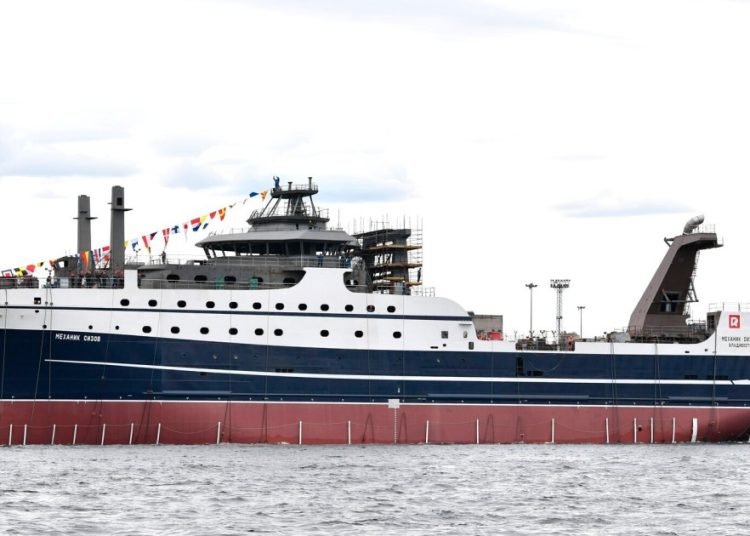Fishing is big business in Russia, one closely linked to the Kremlin and President Vladimir Putin’s projection of power at sea.
The country is one of the world’s top seafood producers and was the eighth-largest exporter to the United States last year, with more than $1.2bn worth of sales, the bulk of it king crab.
But it is unknown exactly how much manages to land in the US by way of China, which sent another $1.7bn in fish to the US last year. Nor does the Biden administration’s ban require companies importing from China to find out.
Among Russia’s biggest seafood exports is Alaska pollock. A cousin of cod, Alaska pollock is the most harvested fish in the US, showing up in everything from imitation crabmeat to McDonald’s Filet-O-Fish sandwiches. Every year, giant, floating factories in the Bering Sea and Gulf of Alaska catch 1.5 million tonnes of fish, the equivalent of more than four times the weight of New York’s Empire State Building.
But the same species is also harvested in Russia in similar amounts, and once processed and imported from China, fills an important gap in the US market. In lieu of tracing the country of origin, US producers rely on the name recognition of Alaska pollock to signal where the fish was caught.

“Consumers can have confidence that if the name Alaska…



























































